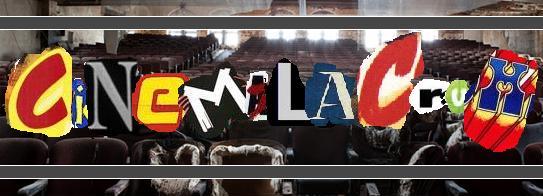I am a huge fan of Pedro Alm
ódovar. I particularly enjoy his newer works and their critical focus on contemporary Spanish familial relations. However, I only began watching his works in the recent years and have yet to make it through much of his older work, All About My Mother being one such film. All About My Mother is, in many critics' eyes, his masterwork. From the onset of the movie it is apparent why such opinions exist, the film is perfectly executed and provides the viewer with great acting, breathtaking visuals and more than a fair amount of laughs, not to mention one of the most somber death scenes I have seen in quite some time. It also reflects all of the elements that cement Alm
ódovar's auteur status: a cast full of sexually ambiguous characters, a vibrant and diverse color pallet and references to both Spanish and world culture.
The film follows the experiences and interactions of Manuela who is searching for her recently deceased son's father Lola...who happens to be a transvestite. Along the way Manuela meets another transvestite Agrado (known for being agreeable), Sister Rosa (a nun who was also impregnated by Lola, played by Penelope Cruz) and Huma Rojo (an aging actress who as is befitting of her name always wears red). Along the way Manuela learns to come to grips with her own sexual confusion and also the untimely death of her son. In the films closing moments she reconciles with Lola, takes on Rosa's baby named Esteban, in honor of Manuela's own lost child and even has an opportunity to rekindle her previous dreams as an actress.

The beauty of this film comes not only in its vibrancy and its open-mindedness, but in that it is complete subversion of traditional melodrama. Framing itself directly in relation to All About Eve, the film sets up every trope in the melodrama tradition only to break it down shortly after. Alm
ódovar inserts heavy string music into scenes of raunchy sexual debauchery and even plays on the visual elements of melodrama, taking the image of a train tunnel to not be a metaphor for Manuela's own dark past, but as a return to the vaginal role of mother, given her matriarchal nature to the childish people in her own life. In fact, at no point does a male character provide a source of guidance. Rosa's father is senile and easily confused and as mentioned earlier Esteban's father is now a woman, failing to assert his masculinity prior to his/her son's death. The film is ultimately about motherhood, an idea that is reiterated in Alm
ódovar's closing statement of thanks to all people like his own mother. It is a far cry from a film about patriarchy, because in the world Almod
óvar has created the notion simply does not exist.
If you are unfamiliar with Alm
ódovar, I would recommend visiting Volver first, and then one of his earlier works such as Tie Me Up, Time Me Down or What Have I Done to Deserve This? If you are versed in these films, but have yet to give this one a shot I cannot urge you more to watch it immediately.
 The film is a mockumentary of sorts, focusing on a large cast of characters attempting to obtain everything from free drinks to one-night stands, showing little concern for much beyond this point. It is apparent that the film is focused on helping individuals maintain one of Maslow's most basic needs and at no time attempts to step up the next block of the pyramid. The film breaks down every essential to young adult nightlife including house parties, drug deals, and even promotes drunk driving. In the end, it leaves little to be learned beyond the simple fact that a bunch of young rich kids can act irrationally with no real repercussions.
The film is a mockumentary of sorts, focusing on a large cast of characters attempting to obtain everything from free drinks to one-night stands, showing little concern for much beyond this point. It is apparent that the film is focused on helping individuals maintain one of Maslow's most basic needs and at no time attempts to step up the next block of the pyramid. The film breaks down every essential to young adult nightlife including house parties, drug deals, and even promotes drunk driving. In the end, it leaves little to be learned beyond the simple fact that a bunch of young rich kids can act irrationally with no real repercussions. 













































